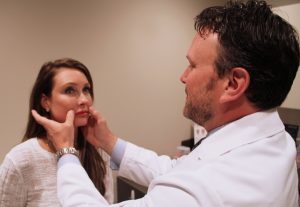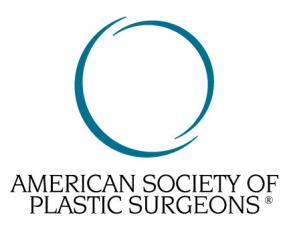

ARLINGTON HEIGHTS, Ill. — New data released by the American Society of Plastic Surgeons (ASPS) reveals that Americans want to put their best face and body forward as their annual plastic surgery procedural statistics show a three percent growth in cosmetic procedures over the last year. According to ASPS statistics there were 17.1 million surgical and minimally-invasive cosmetic procedures performed in the United States in 2016. The data also shows new cosmetic trends in both facelifts and fat.
Patients Use Own Fat to Fill and Sculpt
From body fat reduction to harvesting fat to enhance other parts of the body, the data shows new cosmetic procedural trends related to the role of fat in body shaping.
“One trend we are seeing with fat involves an increase in fat grafting procedures. Plastic surgeons harvest a patient’s unwanted fat from their abdomen using liposuction and then inject it to lift and rejuvenate other areas such as the face, buttock and even the breast,” said ASPS President Debra Johnson, MD. “Because the material injected is the patient’s own fat the results typically last longer than fillers.”
- Minimally invasive cosmetic fat injections increased 13%
- Buttock augmentation using fat grafting increased 26%
- Breast augmentation using fat grafting increased 72%
Newer, non-invasive fat reduction and skin tightening procedures are gaining popularity among patients:
- Injection-based procedures that target fat pockets in specific areas such as under the chin, increased 18%
- Non-invasive fat reduction procedures that use special technology to “freeze” fat without surgery increased 5%
- Non-invasive skin tightening procedures that target fat and tighten sagging areas increased 5%
“These newer, non-invasive procedures appeal to a broad range of patients,” said Dr. Johnson. “Even though they aren’t surgeries, patients still need to take these procedures seriously. Before undergoing any procedure, consult with a board-certified, ASPS-member surgeon who will ensure that it’s performed to the highest medical standards.”
It’s All About that Face
Facelifts, which dropped from the top five most popular cosmetic surgical procedures in 2015, made a comeback in 2016, according to the new stats.
“Patients are captivated by instant improvements to the face. It’s evident in the popularity of apps and filters that change how we can shape and shade our faces,” said Dr. Johnson. “While there are more options than ever to rejuvenate the face, a facelift done by a board-certified plastic surgeon can give a dramatic, longer-lasting result which is why I am not surprised to see facelifts back in the top five most popular cosmetic surgical procedures.”
Top 5 Cosmetic Surgical and Minimally-Invasive Procedures
This year overall cosmetic surgical procedures grew at a slightly higher rate of four percent compared to minimally-invasive cosmetic procedures, which grew by three percent. While body procedures are still popular, three of the five top cosmetic surgical procedures focused on the face.
Of the nearly 1.8 million cosmetic surgical procedures performed in 2016, the top 5 were:
- Breast augmentation (290,467 procedures, up 4 percent from 2015)
- Liposuction (235,237 procedures, up 6 percent from 2015)
- Nose reshaping (223,018 procedures, up 2 percent from 2015)
- Eyelid surgery (209,020 procedures, up 2 percent from 2015)
- Facelifts (131,106 procedures, up 4 percent from 2015)
Among the 15.5 million cosmetic minimally-invasive procedures performed in 2016, the top 5 were:
- Botulinum Toxin Type A (7 million procedures, up 4 percent from 2015)
- Soft Tissue Fillers (2.6 million procedures, up 2 percent from 2015)
- Chemical Peel (1.36 million procedures, up 4 percent since 2015)
- Laser hair removal (1.1 million procedures, down 1 percent from 2015)
- Microdermabrasion (775,000 procedures, down 3 percent from 2015)
Labiaplasty Gains Popularity
For the first time ASPS stats include data on labiaplasty, which the organization began tracking in 2015. The plastic surgery which rejuvenates the labia by lifting and/or injecting fat or filler into the area, increased by 39 percent in 2016, with more than 12,000 procedures.
“As cosmetic procedures become more common we are seeing more diversity in the areas of the body that patients are choosing to address,” said Dr. Johnson. “A decade ago plastic surgeons might have seen a patient every seven to ten years when they needed a major procedure like a facelift or tummy tuck. Now patients have ongoing relationships with their plastic surgeons and feel more comfortable discussing all areas of their body that they may be interested in rejuvenating.”
About the ASPS Annual Procedural Statistics
ASPS members may report procedural information through the first online national database for plastic surgery procedures, Tracking Operations and Outcome for Plastic Surgeons (TOPS). This data, combined with an annual survey sent to American Board of Medical Specialties’ certified physicians most likely to perform these procedures, results in the most comprehensive census on plastic surgery.
More Resources
- STATS REPORT: 2016 National Clearinghouse of Plastic Surgery
About ASPS
The American Society of Plastic Surgeons (ASPS) is the world’s largest organization of board-certified plastic surgeons. Representing more than 7,000 Member Surgeons, the Society is recognized as a leading authority and information source on aesthetic and reconstructive plastic surgery. ASPS comprises more than 94 percent of all board-certified plastic surgeons in the United States. Founded in 1931, the Society represents physicians certified by The American Board of Plastic Surgery or The Royal College of Physicians and Surgeons of Canada. ASPS advances quality care to plastic surgery patients by encouraging high standards of training, ethics, physician practice and research in plastic surgery.
Contact ASPS
Adam Ross: (847) 228-3361, aross@plasticsurgery.org
Shannon McCormick, (614) 477-2719 (mobile), (614) 932-9950 (office), shannon@mediasourcetv.com









